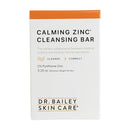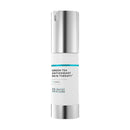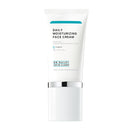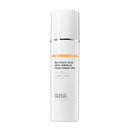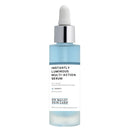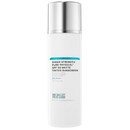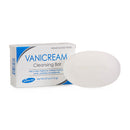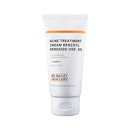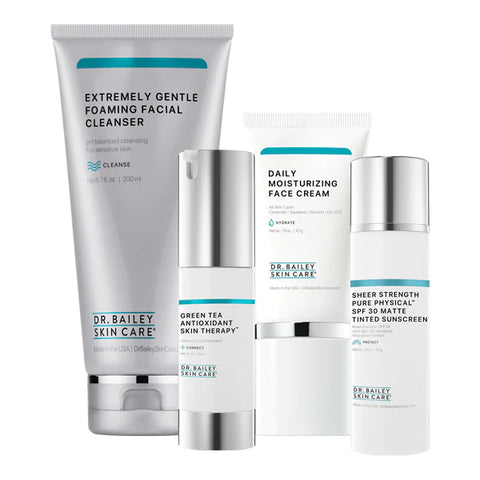Why You Might Have Broken Facial Capillaries

Dr. Bailey,
I am 53 years old and have been using tretinoin cream .025 for 3 years. I had a few broken caps on my cheeks when I started and they have not gotten worse, however it looks as though I now have 2 more right above my jaw line (although much lighter than the ones on my cheek). Will using a moisturizer or antioxidant cream under the tretinoin help prevent this or should I discontinue? Thank you....Barbara M
Dear Barbara,
This is an interesting question and one that points out how everyone needs to weigh the pros and cons with any prescription medicine. Retin A (tretinoin) has been known to increase blood flow and pinken up the treated skin to a small extent. In most cases this is a good thing cosmetically since skin color becomes dull with age and sun damage. In addition, age and sun damage causes capillaries to show through the skin.

Tretinoin, like retinol, helps reduce the visibility of these capillaries because it builds surface collagen in the dermis, thus minimizing the appearance of these capillary. The plot thickens when we consider other causes of 'broken' facial capillaries.
Common causes of broken facial capillaries:
- Sun damage and skin thinning from photodamage. These happen more on the cheeks and areas of skin exposed to the most sun such as nose and temples.
- Very importantly, the fact that skin growths like basal cell carcinoma skin cancers can first appear as an area of skin that has a new increase in capillaries means it is important to have the site examined.
-
 Many people naturally get spider veins on their face along the sides of the nose.
Many people naturally get spider veins on their face along the sides of the nose. - There are also little growths called spider angiomas that are a proliferation of capillaries for some unknown 'decorative' reason. They have not been associated with tretinoin use.
-
Last but not least is rosacea, which often manifests on facial skin as small capillaries as well as long deep capillaries. The long deep capillaries often occur near the ear and jaw line on the face.

There are other reasons why capillaries can show through the skin but these are the most common reasons I see in my practice.
Phew, you can see that it's complicated. What it all means is that the best course of action is to first start with an exam by a good dermatologist to help sort out what type of capillary proliferation you have. Then you can weigh the pros and cons of using Retin A. It may be that your dermatologist determines that your 'broken' capillaries are not due to tretinoin usage. In my own practice, I can't remember off the top of my head anyone whose visible facial capillaries were in my assessment due to their tretinoin use. Most of the 'broken capillaries' I see come under one of the other causes that I mentioned above.
Best retinoid cream to use for broken facial capillaries
 Since Retin A can be irritating, I find it easier to use retinol to stimulate collagen renewal in the sensitive skin conditions I listed above that are prone to broken facial capillaries. My Retinol Night Cream is well tolerated and includes the same important green tea antioxidants below that help sooth irritated sensitive skin prone to spider veins.
Since Retin A can be irritating, I find it easier to use retinol to stimulate collagen renewal in the sensitive skin conditions I listed above that are prone to broken facial capillaries. My Retinol Night Cream is well tolerated and includes the same important green tea antioxidants below that help sooth irritated sensitive skin prone to spider veins.
It's also important for me to point out that there are many simple and successful ways to treat facial capillaries.
Simple treatments for broken facial capillaries.
- Electrocautery is simple, cost effective and low tech. I attach a fine needle like tip to my electrocautery unit and using a very low setting I touch the skin above the vessel. It disappears before my eyes. It's a little uncomfortable but patients love the treatment because it's so successful and not expensive.
- I also use IPL (intense pulsed light treatments, also called BBL or broad band light treatments) to treat facial vessels and in fact I just had a treatment on my own face Friday.
- There are also lasers such as the V-beam which treat blood vessel.
Your dermatologist can help you decide whether any of these treatments might be right for you.
My own bias for my patients (and for my own complexion) is that the benefits of tretinoin are so huge, and treating 'broken capillaries' is usually so easy and successful, that I prefer to stick with the tretinoin.
Learn about how to apply tretinoin cream and create a skincare routine in my guide.
Best antioxidant product to use with tretinoin
I always recommend that my tretinoin patients use Green Tea Antioxidant Skin Therapy morning and night to help fight free radical induced inflammatory damage from normal cellular function and skin stressors such as sun and pollution etc. This unique product loads skin with a high concentration of pure green tea antioxidants and caffeine. I find that it helps quiet facial inflammation so that my patients can better tolerate tretinoin use.
What sunscreen do doctors recommend you use with tretinoin?
With tretinoin, broad spectrum SPF 30 or higher sunscreen is mandatory 365 days a year. The best protection comes from mineral zinc oxide products. They are also the best tolerated for sensitive skin complexions. They are layered on top of your other daily skin care products and under makeup.
When using a powerful skin care product like tretinoin (Retin A) you want to have a Complete Skin Care Routine that fights inflammation, protects from UV rays and keeps your skin healthy. Remember that a Complete Skin Care Routine involves the 4 essential steps: CLEANSE, CORRECT, HYDRATE and PROTECT. For my tretinoin patients, the best Complete Skin Care Routine can be found in my Complete Facial Skin Care Kit.
The routine looks like this:
![]()
CLEANSE skin with a pH balanced and mild cleanser such as my Extremely Gentle Foaming Cleanser.
![]()
CORRECT antioxidant reserve depletion to fight inflammation with Green Tea Antioxidant Therapy. Apply it to freshly cleansed skin both morning and night right after toweling skin dry. At night, my patients apply the tretinoin at the bedside. If they have dry skin that may be after applying the moisturizers listed below. At night apply Retin A or Retinol.
![]()
HYDRATE skin to prevent dryness and irritation. This will help fight broken capillaries that can occur after skin inflammation. Use a really good facial moisturizer such as Daily Face Cream.
![]()
PROTECT skin from UV damage that leads to collagen loss and premature skin aging, both of which can lead to broken capillaries. Apply a high-quality mineral zinc oxide broad spectrum sunscreen such as my Sheer Strength Sunscreen
All of these products to use with your retinoid cream come in my Complete Skin Care Kit.
 For those wanting the benefits of a retinoid but who don't want to use prescription tretinoin, a professional retinol product such as my Retinol Anti-Wrinkle Night Cream can provide the same proven benefits but with less irritation. I now alternate tretinoin and my Retinol Night Cream. I've used a nightly retinoid skin care for over 35 years and know that my skin younger than it would otherwise because of it.
For those wanting the benefits of a retinoid but who don't want to use prescription tretinoin, a professional retinol product such as my Retinol Anti-Wrinkle Night Cream can provide the same proven benefits but with less irritation. I now alternate tretinoin and my Retinol Night Cream. I've used a nightly retinoid skin care for over 35 years and know that my skin younger than it would otherwise because of it.
Warm Regards,
Cynthia Bailey MD, Dermatologist
Disclaimer: Please realize that availing yourself of the opportunity to submit and receive answers to your questions from Dr. Bailey does not confer a doctor/patient relationship with Dr. Bailey. The information provided by Dr. Bailey is general health information inspired by your question. It should not be a substitute for obtaining medical advice from your physician and is not intended to diagnose or treat any specific medical problem (and is not an extension of the care Dr. Bailey has provided in her office for existing patients of her practice). Never ignore your own doctor’s advice because of something you read here; this information is for general informational purpose only.
Author: Dr. Cynthia Bailey M.D. is a Board Certified dermatologist practicing dermatology since 1987. She has done well over 200,000 skin exams during her career and authors the longest running physician written skin health blog in the world.


